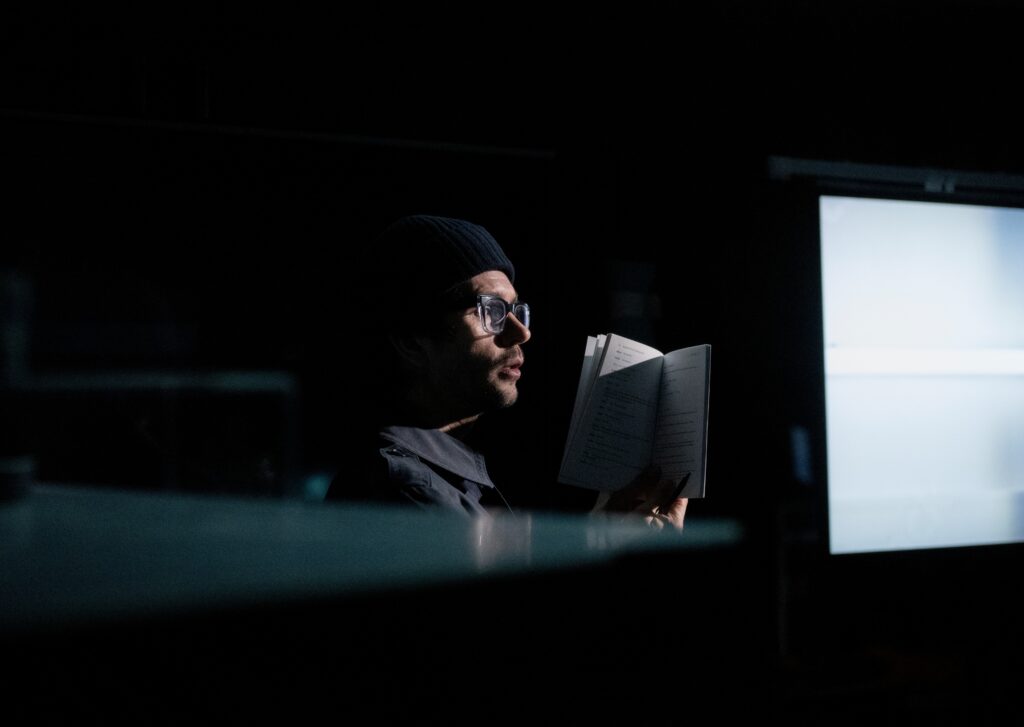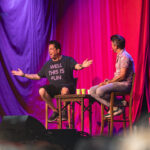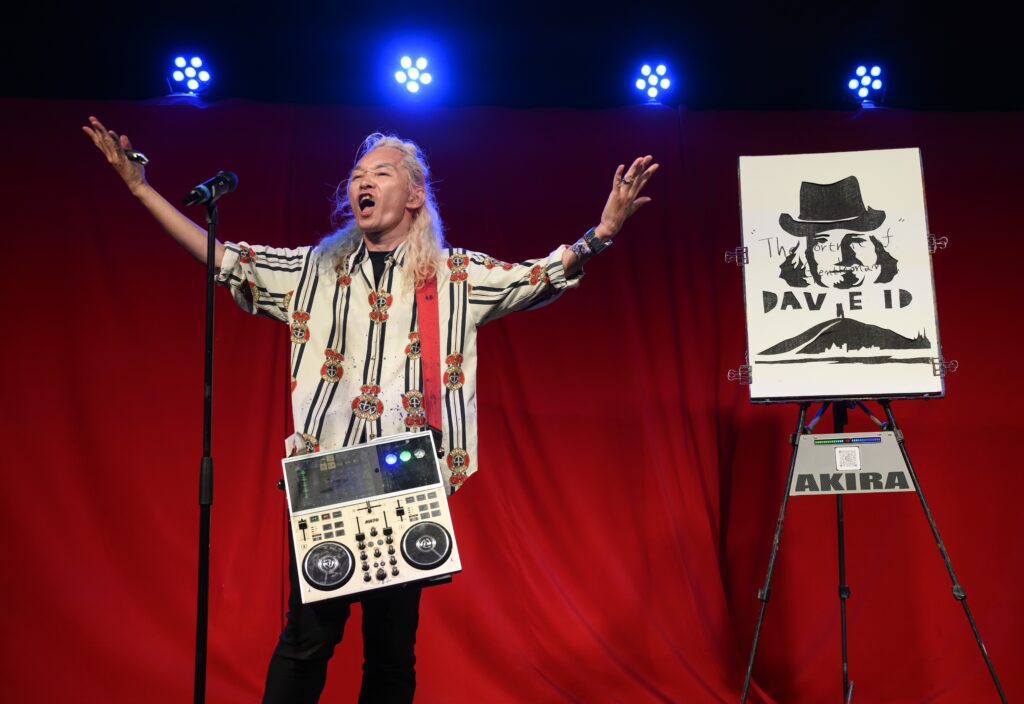
So begins David Byrne’s tenure at the helm of the Royal Court with Bluets, an adaptation of Maggie Nelson’s book of the same name, opening in the theatre’s main space. Margaret Perry has adapted – or rather, as she puts it, ‘translated’ – the 240 ‘propositions’ of Maggie Nelson’s prose poetry book of the same name, so that, under Katie Mitchell’s direction, it becomes a hybrid of stage and film. In the programme, Mitchell calls the art form ‘live cinema’ but that somehow undersells the medium.
Our three actors, Ben Whishaw, Emma D’Arcy and Kayla Meikle – all equally impressive – stand across the stage, each set up with individual cameras, microphones and small workspaces for close-ups. Behind them are three screens where backdrops to scenes play out behind them as they act – the two elements combined on a larger cinema screen that hangs above the stage. Miming walking along the street, standing looking out at the Thames, driving a car or riding on a bus, the recording above sets them on the street, on the bridge, in the car and on the bus. However, in a handful of scenes, the palettes of the actor and the background don’t quite match, so they unintentionally appear as disconnected things – but it’s a minor issue.

Across the play’s 80 minutes, the trio use the technique, with the assistance of stagehands, to create a film version of Nelson’s book which sees the author dealing with the end of a relationship while also caring for a friend who has been paralysed following an unspecified accident. The narrator has found themselves collecting blue items, drawn in completely by the colour blue. Their collection includes a small wrapped cube of viridian dye, stones in pale hues, a bottle of blue ink, old bus tickets, a photo of the sky, and more. Our trio play versions of the narrator – notionally A (Whishaw), B (D’Arcy) and C (Meikle) – and occasionally their former partner or their recovering friend.
A hand clasping another on a pillow suggests a passionate love-making session. A hand gently placed on another on a sheet suggests compassion at a hospital beside. The magic in Alex Eales’ stage design, Grant Gee’s video direction and Ellie Thompson’s video design is that these scenes genuinely look like they are shot in bedrooms or hospital wards with beds. We see the finished product above on the large screen as the workings playing out below. The fragments of Nelson’s book come to life on screen too. We see a clip of John Kelly “[singing] Joni Mitchell’s ‘Blue’ in heartbreaking drag” – their song filled with grief. We see a clip of Derek Jarman’s film Blue, and A at a gallery where Mark Rothko’s 1966 painting Untitled (Blue Divided by Blue) hangs.

A meditation on the colour blue inevitably involves feeling blue. There are plenty of heavy themes here: depression, physical pain, and lost love. The other overriding theme is sex – looking back at the sexual elements of a relationship now gone evoking in the narrator a sense of a lost connection that brings with it a blueness. The production seeks to reflect the female experience as we hear and experience the narrator’s internal thoughts as they consider themselves and their place in the world. It is at times incredibly heart-wrenching.
By the end, our narrator has reframed Simone Weil saying they “aimed to be a student not of longing but of light” and you leave feeling somehow revived by what has passed, as if coming out of your own meditation. In a year that has seen stale use of film in theatre with Ivo van Hove’s Opening Night and Jamie Lloyd’s Tom Holland-fronted Romeo & Juliet, Bluet breezes in as a breath of fresh air. Mitchell has managed to create a truly unique experience that captures the heart of a unique book – what a fascinating theatrical experiment.
Bluets is at the Royal Court Theatre, London until 29 June 2024














